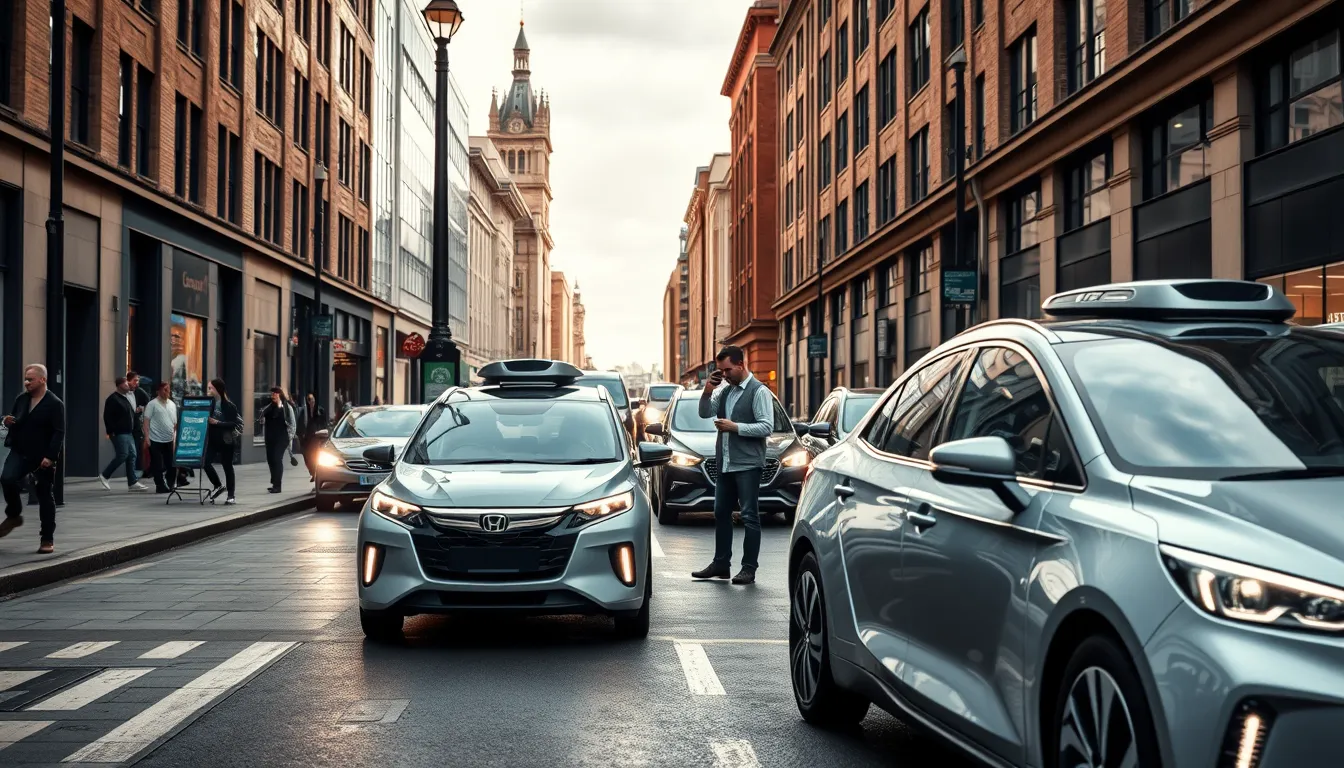Now Reading: Innovative UK Self-Driving Cars: Transforming Transportation
-
01
Innovative UK Self-Driving Cars: Transforming Transportation
Innovative UK Self-Driving Cars: Transforming Transportation

Innovative UK Self-Driving Cars: Transforming Transportation
The rise of UK self-driving cars represents one of the most dynamic shifts in modern transportation. With an eye towards innovation, the United Kingdom is embracing autonomous vehicle technology as a catalyst for change. This article explores how public consultation, regulatory reforms, and technological integration are shaping the future of mobility. UK self-driving cars are not just about automation but also about creating a resilient framework that balances innovation with public safety.
Advancing Autonomous Vehicle Regulation
Autonomous vehicle regulation is pivotal for the safe deployment of self-driving cars. The UK government, in close collaboration with industry experts, is working to establish clear rules that account for evolving technology, urban mobility innovation, and public safety. Current debates center around:
- Safety standards and compliance measures
- Data privacy and cybersecurity protocols
- Liability in case of accidents
These discussions are crucial because effective regulation ensures that technology integrates seamlessly with existing road systems while protecting the rights of all road users. By addressing these key areas, the government is ensuring that the rollout of UK self-driving cars benefits both consumers and innovators.
The Role of Public Consultation Self-Driving
Public consultation is a cornerstone of the UK’s strategy to integrate self-driving technology. Officials have launched initiatives that invite citizens, industry leaders, and technology enthusiasts to contribute ideas and perspectives. This inclusive approach emphasizes that policy-making is a shared responsibility.
In structured public consultations, participants are asked to provide feedback on:
- Ethical implications of autonomous vehicles
- Preferred safety measures and risk mitigation strategies
- Practical considerations for urban and rural deployment
Such initiatives help clarify how public consultation shapes autonomous vehicle policy, putting consumer confidence at the forefront of technological progress. Input gained from public forums not only informs regulations but also drives improvements in security and operational efficiency.
How Public Consultation Shapes Autonomous Vehicle Policy
One vital aspect is understanding how public consultation shapes autonomous vehicle policy. Feedback from diverse stakeholders ensures that the policies are not only technologically sound but also socially responsible. In this process, several benefits are clear:
- Enhancing transparency in government decisions
- Aligning policy objectives with real-world challenges
- Introducing flexibility to adapt to future technological advancements
Integrating Self-Driving Cars with Existing Infrastructure
An important challenge facing autonomous vehicle deployment is integrating self-driving cars with existing infrastructure. Urban areas, in particular, require smart adaptations to accommodate new traffic patterns and enhanced digital communication systems. This integration involves:
- Updating road designs and traffic management systems
- Installing advanced sensors and communication protocols
- Aligning infrastructure investment with technological innovation
By focusing on these upgrades, the government intends to ensure that UK self-driving cars can operate safely on both legacy and modern road networks, paving the way for a smoother transition to autonomous travel.
Balancing Technology and Public Safety in Self-Driving Cars
Equally important is striking a balance between harnessing cutting-edge technology and ensuring public safety. The rapid expansion of self-driving car technology calls for a careful evaluation of risk factors, including data security, ethical decision-making algorithms, and emergency response protocols. Key strategies include:
- Rigorously testing new systems under varied conditions
- Implementing multi-layered cybersecurity defenses
- Engaging with the public to demystify technology and build trust
Such measures confirm that safety remains paramount. By aligning technology advancements with stringent safety protocols, UK self-driving cars can reach their full potential without compromising the well-being of commuters.
Future Prospects and Collaborative Innovations
The development of UK self-driving cars is a testament to forward-thinking governance and collaboration among stakeholders. With pilot programs already underway, early lessons are being incorporated into broader policy frameworks. The collaborative process involves:
- Continuous testing in real-life conditions
- Iterative improvements based on stakeholder feedback
- Collaborative projects between tech companies, automotive firms, and public agencies
These initiatives signal a promising future where data-driven decisions will further refine autonomous vehicle technology. This integrated approach offers a blueprint for other nations looking to balance progressive innovation with tried-and-true public safety measures.
Conclusion
In conclusion, the evolution of UK self-driving cars is set to redefine urban mobility with a balanced approach that prioritizes both technological advancement and regulatory oversight. Through extensive public consultation, careful integration of self-driving cars with existing infrastructure, and robust autonomous vehicle regulation, the UK is poised to lead the way in creating safer and more efficient transportation networks. The journey towards widespread adoption of self-driving technology illustrates how public input can fuel innovation while safeguarding societal values. As policymakers continue to refine these systems, the future of mobility looks poised to offer smarter, safer, and more sustainable solutions for everyone.
For further reading on smart transportation and regulatory updates, consider visiting official government websites and trusted news sources on mobility innovations.

























